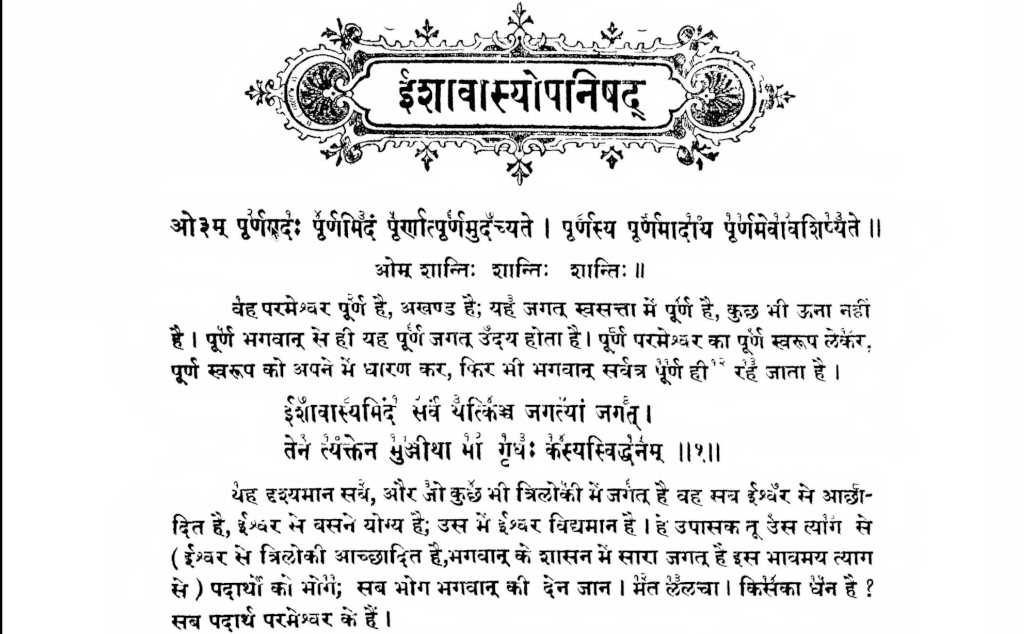The Upanishads

Upanishads are like the gist of the Vedas. They are also referred to as Vedanta, which means the final part of the Vedas. Most of them are very short documents containing a few verses.
Most of which came from the Upanishads, Vedantic knowledge was taught only to the “Adhikari” or to the qualified one to receive that knowledge. Therefore, the Gurus taught the Vedantic knowledge to their disciples individually or in a very small group.
To understand what Upanishads are, we first need to understand the word Upanishad’s very meaning, which comprises three syllables – Upa, Ni, and Shad.
Upa means near or close. Since the teaching was to be imparted individually, the Guru and disciple would sit near each other. Upa also signifies that one can only aspire to reach close to the Truth, as described in the Vedic and Vedantic teachings. One cannot become one with the Truth. If one becomes part of the Supreme Truth, then only the Supreme Truth remains. Therefore, the individual trying to reach the Truth would be no more.
Shad means to sit. The disciple would sit close to the teacher for a one-to-one teaching session. Here, sitting down also means that the disciple should also settle down the mind. Vedantic teachings are profound and can be understood only when the disciple is fully attentive.
Shad also means to shake up. Vedanta is meant to shake one up from ignorance into knowledge. To be understood, spiritual knowledge requires one to shake up their rational mindset. The shakeup from the teachings includes waking up the dormant sensory organs in our body and brain. Once these sensory organs, unused by most of humanity, are woken up, one can experience and realize the Truth.
What about the syllable Ni?
We did not forget about it! Ni means below. The disciple would sit a level below the Guru to receive the teachings of the Upanishads. Like water can be poured into a jug at a lower level, the teachings could be received when the disciple sits a level below the Guru. Another significance of sitting a level below is the humility and acknowledgment by the disciple that they are not equal to the Guru. Such humility makes learning more effective.
A large part of the original Vedic text is the description of the rituals, fire sacrifices, and ceremonies to be performed to appease the Gods. The Upanishads deal with the highest purpose of Vedas to investigate one’s own Truth.
The Upanishads are like discussions between the Guru and the disciple. The questions asked by the disciples help get the answers for every question about life and the Supreme Truth. Since the Upanishads are terse documents, several ancient sages have provided commentaries so that the common masses may benefit from the Vedantic wisdom.